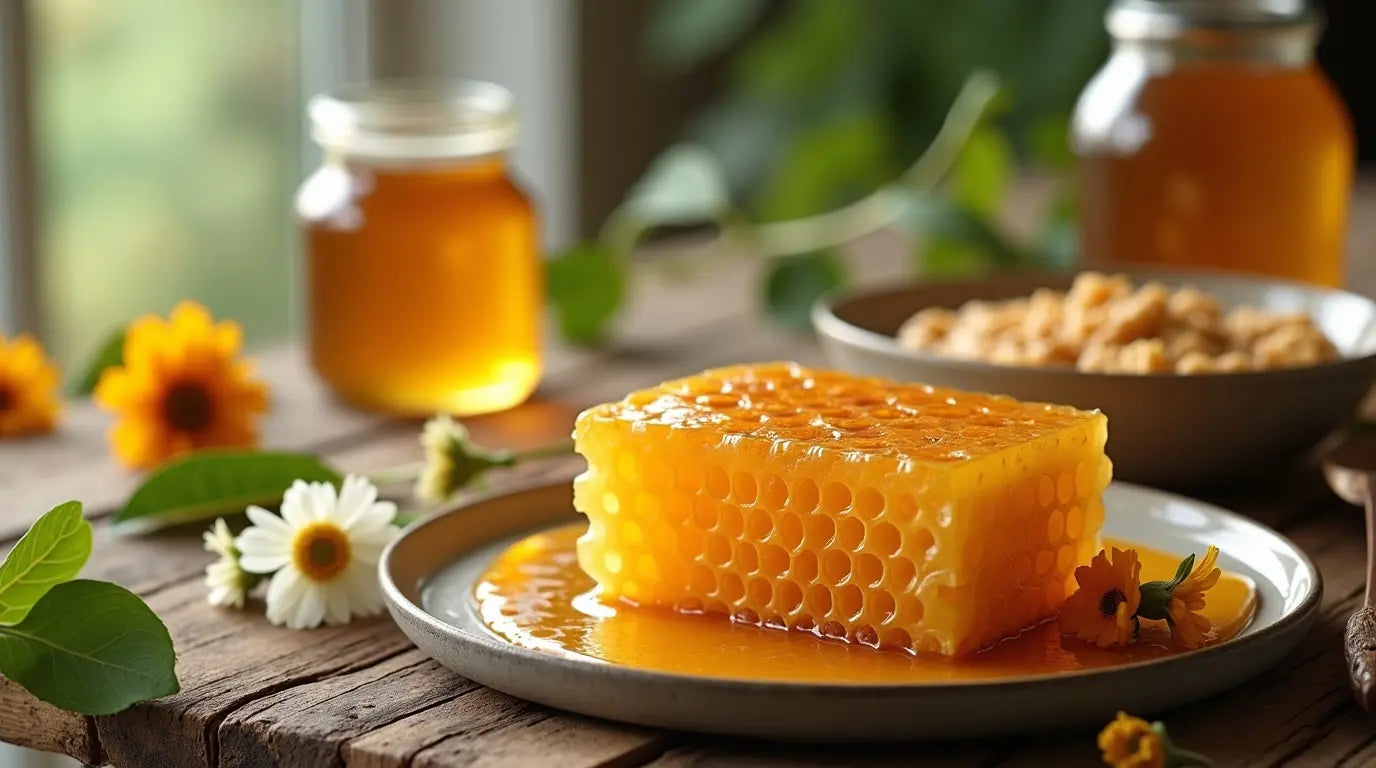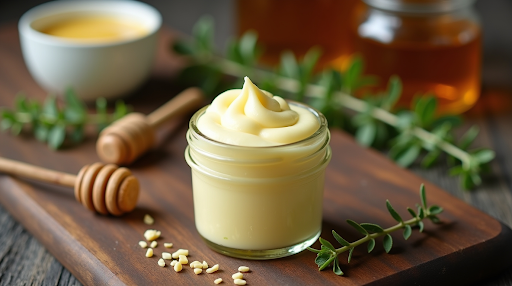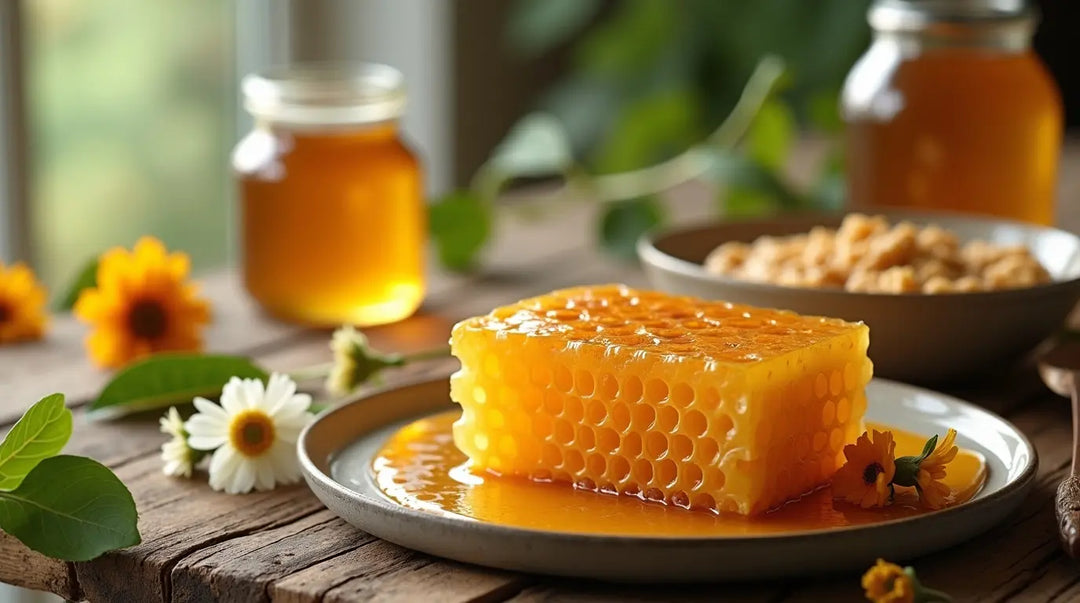Why is Honey Healthy?

Why is Honey Healthy? The Golden Elixir of Nature Explained
For millennia, honey has been cherished not just as a natural sweetener but as a potent medicinal substance. This golden, viscous liquid, produced by diligent bees from the nectar of flowers, is a staple in kitchens and traditional medicine cabinets worldwide. Its reputation as a health-promoting food is not just folklore; modern science is increasingly validating the numerous benefits that our ancestors attributed to it. But what exactly makes honey so healthy? Understanding its unique composition and the mechanisms behind its therapeutic properties is key to appreciating its value.
This article delves into the science behind honey's health benefits. We will explore its rich nutritional profile, from its essential sugars to its powerful antioxidants. We will examine its well-documented antimicrobial effects, its role in wound healing, its ability to soothe sore throats, and its potential to support digestive health. However, like any potent substance, it's also crucial to understand its proper usage and potential risks. By the end, you will have a comprehensive understanding of why this natural wonder deserves a place in a balanced, health-conscious lifestyle.
Nutritional Profile of Honey: More Than Just Sugar
At first glance, honey's primary components are simple sugars, but a closer look reveals a complex and rich nutritional tapestry. This complexity is what elevates it from a mere sweetener to a functional food with tangible health benefits. The exact composition can vary depending on the floral source, region, and processing methods, but the fundamental profile remains consistent.
Honey is predominantly composed of carbohydrates, making up about 95% of its dry weight. It also contains a small but significant amount of water, typically around 17-18%. This low water content is crucial for its stability and resistance to spoilage.
● Sugars (Fructose and Glucose): The main components are two simple sugars: fructose (about 38%) and glucose (about 31%). This combination makes honey sweeter than table sugar (sucrose) and gives it its characteristic texture and flavor. Unlike refined sugars, these monosaccharides are readily absorbed by the body, providing a quick source of energy. The remaining carbohydrates consist of more complex sugars like maltose and sucrose.
● Vitamins and Minerals: While not a primary source of vitamins and minerals in the diet, honey does contain trace amounts of various essential micronutrients. The quantity depends heavily on the floral origin. Common vitamins found include B-complex vitamins such as riboflavin (B2), niacin (B3), pantothenic acid (B5), and vitamin B6, as well as vitamin C. Essential minerals present in small quantities include calcium, potassium, magnesium, iron, zinc, and selenium. Darker honeys, such as buckwheat honey, tend to have a higher concentration of these beneficial minerals.
● Antioxidants (Flavonoids and Phenolic Acids): Perhaps the most significant aspect of honey's nutritional profile is its impressive array of antioxidants. These compounds are responsible for many of its protective health benefits. The two main classes of antioxidants found in honey are flavonoids (like pinocembrin, chrysin, and galangin) and phenolic acids (like gallic acid and caffeic acid). These plant-derived compounds are collected by bees from nectar and are preserved in the final honey product. The antioxidant power of honey is often compared to that of fruits and vegetables, with darker varieties generally boasting a higher concentration.
● Enzymes and Amino Acids: Honey contains several important enzymes, including diastase, invertase, and glucose oxidase. The glucose oxidase enzyme is particularly noteworthy; when honey is diluted, this enzyme produces hydrogen peroxide (H2O2), a compound known for its potent antimicrobial properties. Honey also contains a variety of amino acids, the building blocks of protein, with proline being the most abundant.
This intricate blend of sugars, vitamins, minerals, enzymes, and powerful antioxidants makes honey a unique and valuable food, setting it apart from empty-calorie refined sweeteners.
The Health Benefits of Honey: A Scientific Perspective
The unique nutritional composition of honey translates into a wide range of scientifically supported health benefits. From fighting infections to promoting healing, this natural substance has proven its worth in both traditional practices and modern clinical settings.
Antioxidant Properties
To understand honey's benefits, one must first understand antioxidants. Our bodies are constantly exposed to oxidative stress caused by free radicals—unstable molecules that can damage cells, leading to aging and chronic diseases like heart disease and cancer. Antioxidants are molecules that neutralize these free radicals, protecting the body from their harmful effects.
Honey is a rich source of plant-based antioxidants, primarily flavonoids and phenolic acids. Numerous studies have demonstrated that consuming honey can increase the level of antioxidants in the blood. Research suggests that these compounds contribute to a reduced risk of heart attacks, strokes, and some types of cancer. They may also promote eye health. The potent antioxidant activity in darker honeys, in particular, is linked to their ability to improve cholesterol levels by lowering "bad" LDL cholesterol while raising "good"HDL cholesterol.
Antimicrobial Effects
One of the most celebrated properties of honey is its ability to fight bacteria, fungi, and other microbes. This effect is due to a combination of factors:
- Low Water Activity: Honey's low water content creates an environment where microorganisms cannot survive or reproduce.
- Acidity: Honey is naturally acidic, with a pH between 3.2 and 4.5, which is inhospitable to many bacteria.
- Hydrogen Peroxide: As mentioned, the enzyme glucose oxidase in honey produces low levels of hydrogen peroxide when it comes into contact with moisture, acting as a natural antiseptic.
While most honey varieties possess these antimicrobial qualities, some types are exceptionally potent. Manuka Honey, produced in New Zealand from the nectar of the Manuka tree, is renowned for its powerful and stable antibacterial properties. This is primarily attributed to a high concentration of a compound called methylglyoxal (MGO). Unlike the hydrogen peroxide activity in other honeys, MGO's antibacterial power is non-peroxide based, making it more stable and effective.
To better understand the potency of Manuka honey, manufacturers use a rating system based on the concentration of Methylglyoxal (MGO). The number on the label indicates the minimum milligrams of MGO per kilogram of honey. A higher number signifies stronger antibacterial activity and greater therapeutic potential.
|
MGO Rating |
MGO Concentration (mg/kg) |
Potency Level |
Common Uses |
|
100+ mg/kg |
Everyday Wellness |
Daily immune support, natural sweetener with added benefits. |
|
|
250+ mg/kg |
Medium Strength |
Supporting digestive balance, soothing sore throats and coughs. |
|
|
550+ mg/kg |
High Strength |
Strong support for gut health, topical use on minor wounds and skin irritations. |
|
|
850+ mg/kg |
Very High Strength |
Targeted therapeutic use for more persistent bacterial issues. |
|
|
1200+ mg/kg |
Ultra High Strength |
Advanced, potent support for significant health concerns. |
|
|
1500+ mg/kg |
Specialist Strength |
Highest available potency, often used for specific therapeutic applications. |
These high-MGO honeys are often used in medical settings for their ability to combat even antibiotic-resistant bacteria like MRSA (Methicillin-resistant Staphylococcus aureus).
Wound Healing
The use of honey as a wound dressing is an ancient practice that is experiencing a modern resurgence. Its antimicrobial, anti-inflammatory, and antioxidant properties make it an ideal agent for promoting healing. When applied to a wound, honey keeps the area moist and clean, creating a protective barrier against infection.
The high sugar concentration of honey draws fluid out of the wound (an osmotic effect), which helps to reduce swelling and encourages the flow of lymph to cleanse the wound. The low pH and hydrogen peroxide production further inhibit bacterial growth. Medical-grade honey, particularly high-MGO Manuka honey, is now used in hospitals to treat burns, ulcers, and non-healing wounds. Evidence from numerous clinical studies supports its effectiveness in accelerating tissue repair, reducing scarring, and minimizing infection rates.
Soothing Sore Throats and Coughs
A spoonful of honey in warm tea is a time-honored remedy for a sore throat, and for good reason. Honey's thick, viscous consistency coats the throat, providing immediate relief from irritation. Its natural anti-inflammatory properties help to reduce swelling in the throat tissues.
Furthermore, honey has been shown to be an effective cough suppressant. A study by Penn State College of Medicine found that a small dose of buckwheat honey given before bedtime provided better relief for children's nighttime coughs and sleep difficulties than a common over-the-counter cough suppressant, dextromethorphan. The World Health Organization (WHO) now lists honey as a potential demulcent for treating coughs in children. Its antimicrobial effects may also help to fight the underlying infection causing the sore throat or cough.
Digestive Health
Honey may also play a beneficial role in maintaining a healthy digestive system. It has been investigated for its potential to treat conditions like gastritis and diarrhea. Some evidence suggests it may help inhibit the growth of Helicobacter pylori (H.pylori), a common bacterium responsible for stomach ulcers.
Additionally, certain complex sugars in honey, known as oligosaccharides, can function as prebiotics. Prebiotics are non-digestible food ingredients that feed the beneficial bacteria (probiotics) in your gut, such as Bifidobacteria and Lactobacilli. A healthy gut microbiome is essential for proper digestion, a strong immune system, and overall well-being. By promoting the growth of these good bacteria, honey can contribute to a balanced and healthy digestive tract.
How to Incorporate Honey into Your Diet
Integrating honey into your daily routine is simple and delicious. Its versatility allows it to be used in countless culinary applications, but it's important to be mindful of quantity to avoid excessive sugar intake.
Culinary Uses
Here are some practical and tasty ways to add honey to your meals and beverages:
● Natural Sweetener: Use it in place of refined sugar in your tea, coffee, or morning oatmeal. Its higher fructose content means it tastes sweeter, so you can often use less.
● Breakfast Topping: Drizzle honey over yogurt, granola, pancakes, or whole-grain toast for a touch of natural sweetness and flavor.
● Salad Dressings: Combine honey with olive oil, vinegar, and mustard to create a delicious and balanced vinaigrette for your salads.
● Marinades and Glazes: Honey's ability to caramelize makes it an excellent ingredient for marinades and glazes for chicken, salmon, or roasted vegetables. It adds a beautiful color and a sweet, savory flavor.
● Baking: Substitute honey for sugar in baking recipes. Note that honey is a liquid and sweeter than sugar, so you may need to adjust the recipe by reducing other liquids and the overall amount of sweetener.
● Energy Boost: A spoonful of honey before a workout can provide a quick and easily digestible source of energy.
Dosage Recommendations
While honey is a natural product, it is still a form of sugar and is high in calories. Moderation is key. For most adults, a daily intake of one to two tablespoons (about 21-42 grams) is a reasonable amount to enjoy its health benefits without consuming too much sugar. This amount can provide valuable antioxidants and other beneficial compounds without significantly impacting your overall calorie or sugar count. It is always best to think of honey as a healthy replacement for other, less beneficial sweeteners, rather than an addition to a diet already high in sugar.
Potential Risks and Considerations
Despite its numerous benefits, there are a few important considerations and risks to be aware of when consuming honey.
Infant Botulism
The most critical warning associated with honey concerns infants. Honey should never be given to children under one year of age. This is because it can contain spores of the bacterium Clostridium botulinum. In the immature digestive system of an infant, these spores can germinate and produce a toxin that causes a rare but serious illness called infant botulism. Symptoms can include constipation, poor feeding, weakness, and difficulty breathing. The digestive systems of older children and adults are developed enough to pass the spores through the body without harm, but for infants, the risk is severe.
Caloric Content and Sugar
Honey is a high-calorie food. One tablespoon contains approximately 64 calories and 17 grams of sugar. While it is a healthier choice than refined white sugar or high-fructose corn syrup due to its added nutrients and antioxidants, it should still be consumed in moderation, especially for individuals managing their weight or blood sugar levels. People with type 2 diabetes should be particularly cautious and consult with their healthcare provider about incorporating honey into their diet, as it can cause a rise in blood sugar levels.
Conclusion: The Sweet Path to Wellness
Honey is far more than just a simple sweetener. It is a complex, natural product packed with bioactive compounds that offer a remarkable range of health benefits. Its powerful antioxidant and antimicrobial properties, its proven effectiveness in wound healing and soothing coughs, and its potential role in supporting digestive health make it a true functional food. From general wellness to targeted therapeutic uses, especially with high-potency varieties like Manuka honey, its value is backed by both ancient tradition and modern scientific research.
By incorporating honey into a balanced diet in a mindful and moderate way, you can harness its golden goodness to support your overall health. Remember to choose high-quality, minimally processed honey to ensure you are getting the full spectrum of its beneficial components. While it's not a magic cure-all, honey stands as a testament to the powerful synergy found in nature—a sweet, delicious, and healthful gift from the bees.





